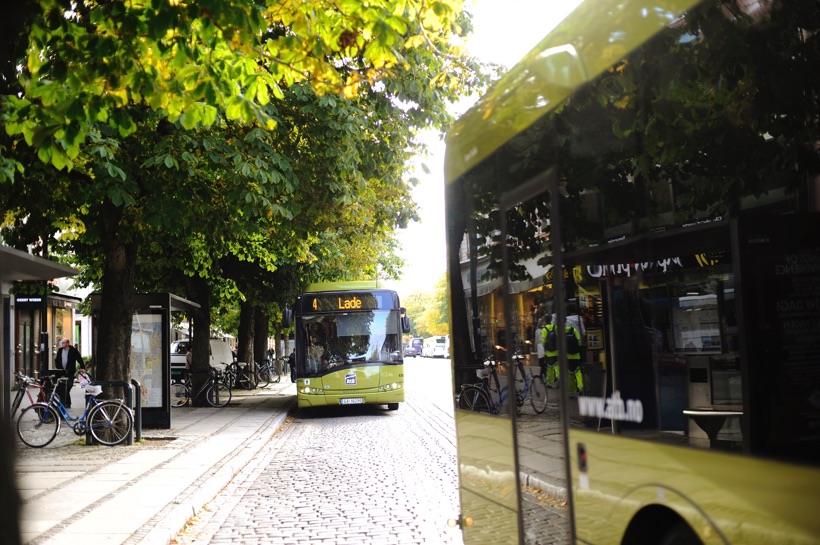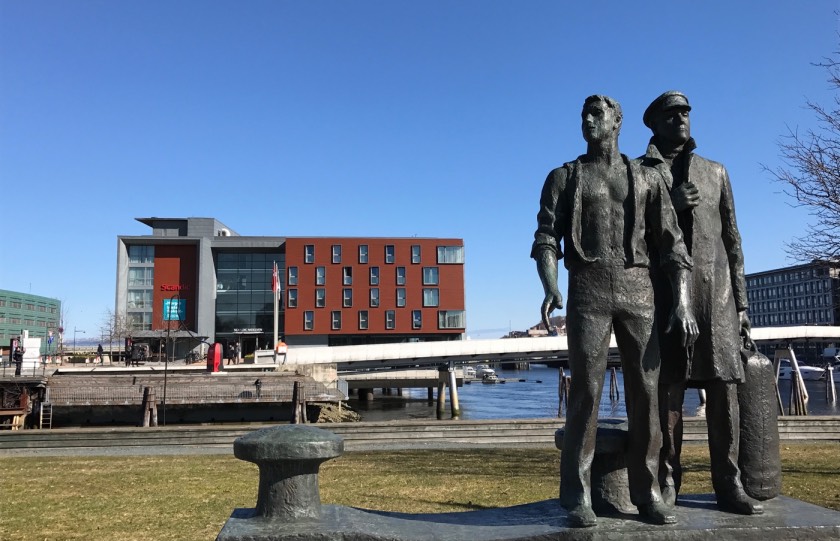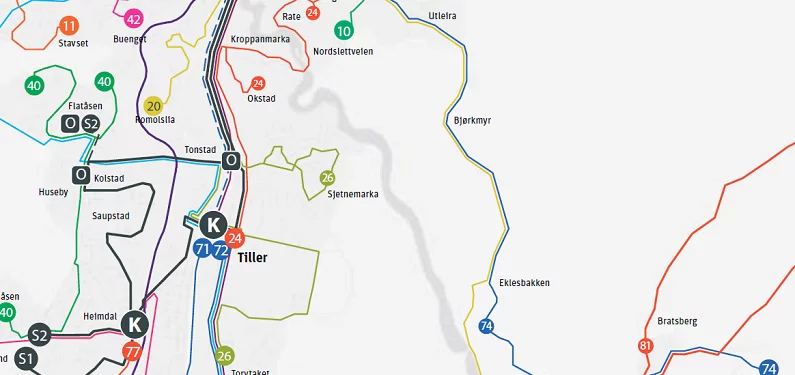
From Autumn 2019, Trondheim gets a new public transport system.
The new system is designed around the concept of super buses to move more people, more quickly, between important parts of the city.
It is cheaper to implement and more flexible to run than an expanded tram network, which had been discussed in Trondheim's political circles for many years.
A hub and spoke model will see some districts of the city no longer have direct bus access to the city centre, but public transport bosses insist the service will be better and quicker for the vast majority of people.
The super bus concept
The foundation of the new system is the super bus concept, designed to move people quickly along the city's major routes, from the city centre south to Tiller and Heimdal, and from the city centre east to Strindheim and Ranheim.
The three proposed super bus lines are designed to run with high frequency and fewer stops and from as early as 5.30am on weekdays.
Line 1 (tentatively scheduled to run Lund – Kattem – Heimdal – Tiller – Tonstadkrysset – Lerkendal – Central Trondheim – Inherredsveien – Ranheim) will run as often as every 5 minutes during the weekday rush hour.

District services
To complement the three main lines, there will be a series of district lines with high frequency that are designed for transfer to super bus lines, although some of these will also run into Trondheim city centre.
Some are based on the current bus lines of today but others are brand new, so could make a significant impact on your travel habits.
For example, residents of Sjetnemarka currently take the number 3 for an indirect route to the city centre via Kroppanmarka, Fossegrenda, and Nidarvoll, which can take up to 30 minutes, or they walk to Tonstadkrysset to pick up a bus that runs along the E6 instead.
In the future plans, there will be no direct service from Sjetnemarka to the city centre.
Residents can continue to walk to Tonstadkrysset from where they can take a super bus service that should run quicker than the current buses, or use the new district route 26. This route loops around Sjetnemarka and continues on to loop around Tiller.
By taking the 26 to meet the super bus at Tonstadkrysset or Tiller, the idea is that users will enjoy a quicker, more reliable journey to the city centre. As both services run every 10 minutes during the weekday rush hour, it's more logical than it may seem at first.
Important note: The above plan is just one example of the original proposals, which may of course change before the service comes into operation in 2019.

Unfortunately the proposals don't include any change to the Sunday service, which doesn't get up and running until 9am and runs every 20 minutes at the most.
An environmental decision
The proposed new system aims to cut the growth in traffic on Trondheim's roads to zero. To do so, 1.4 billion kroner is to be invested in the project.
The money will be spent on new purpose-built super buses up to 24-metres in length along with new transport interchanges built to accommodate the length of the buses and the amount of people expected to use them.
Plans are still in flux and are expected to change before the planned implementation date of autumn 2019. The current plans including proposed lines for all districts of the city are available to view on the AtB website.


Looks like a nice bus but SUPER?
The picture is of the current buses. The new ones haven’t been confirmed yet.